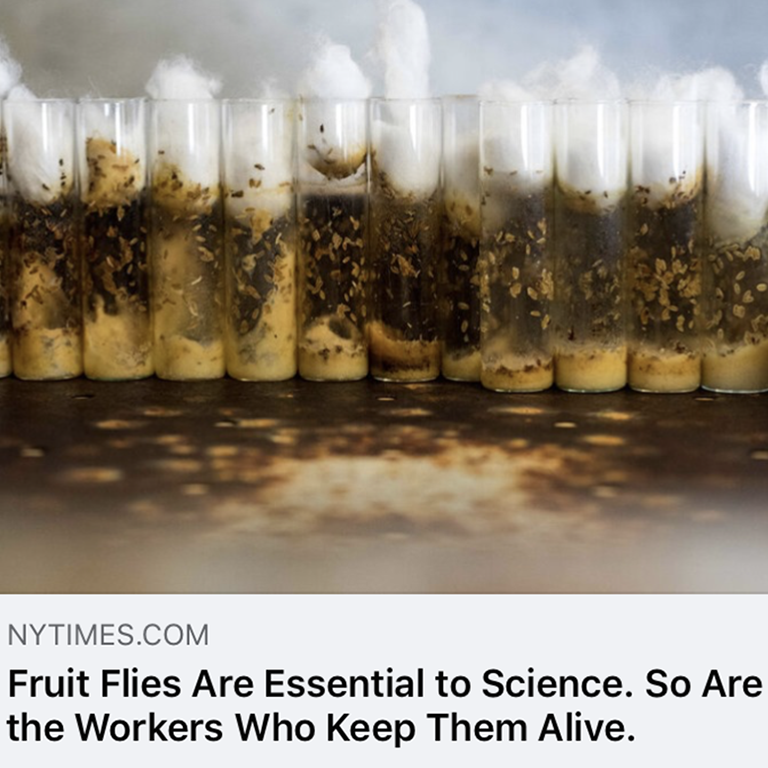Cara Giaimo of The New York Times writes in her article, "Sustaining the world’s biggest Drosophila collection during the pandemic has been a challenge, but the people in Indiana who supply the insects to labs around the world stay dedicated to the task."
Giaimo is referring to the staff of the Bloomington Drosophila Stock Center (BDSC) in the College of Arts and Sciences Department of Biology at Indiana University Bloomington.
Read the article: Fruit Flies Are Essential to Science. So Are the Workers Who Keep Them Alive.
The BDSC collects, maintains, and distributes genetic stocks of Drosophila melanogaster. The BDSC, which is a direct descendent of the strain collection established by T.H. Morgan's research group early in the 20th century, has been at Indiana University since 1987. Over 204,000 subcultures were distributed to laboratories around the world in 2019. The collection is supported by grant funds from NIH (OD, NINDS, NIGMS, and NICHD) and from user fees.
The BDSC's user base includes more than 3,500 research groups in 70 countries. The collection consists of over 77,000 different genetic strains containing nearly 81,000 defined genetic elements—including mutations, chromosomal aberrations, and transposon insertions as well as tools for gene misexpression, site-specific recombination, and transgenesis.
The BDSC website provides information concerning stocks, their experimental uses, ordering and account information, and postal regulations. Information about genetic components of Bloomington stocks is fully integrated into FlyBase, the primary genetic and genomics database for Drosophila workers.
Managing the BDSC is an enormous responsibility even during the best of times. Many thanks to The New York Times for reporting on the center's incredible staff and its efforts to keep the BDSC going during the pandemic.

 The College of Arts
The College of Arts